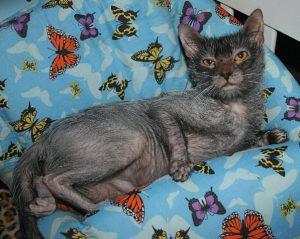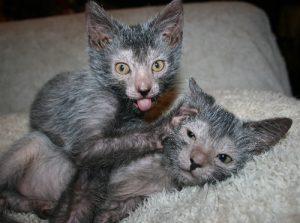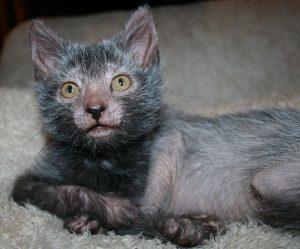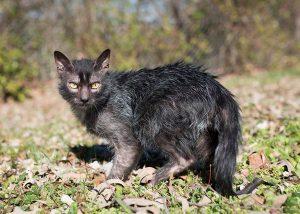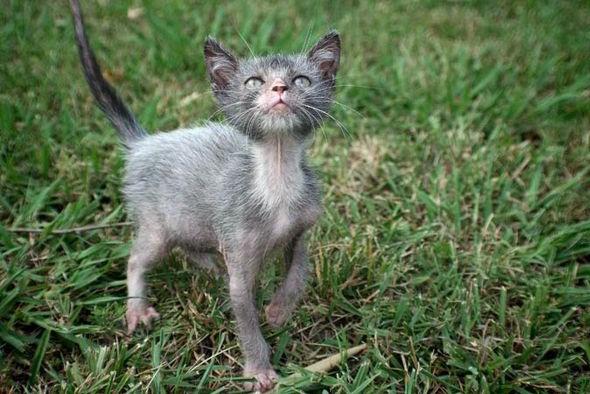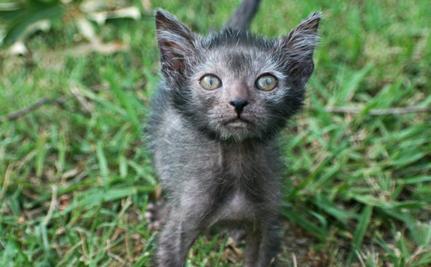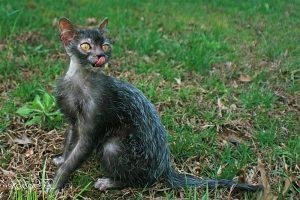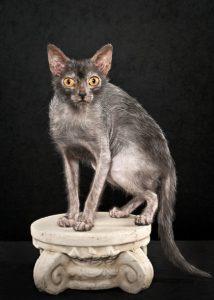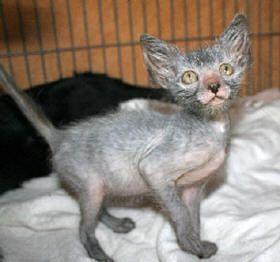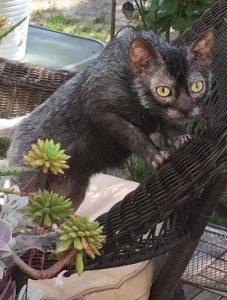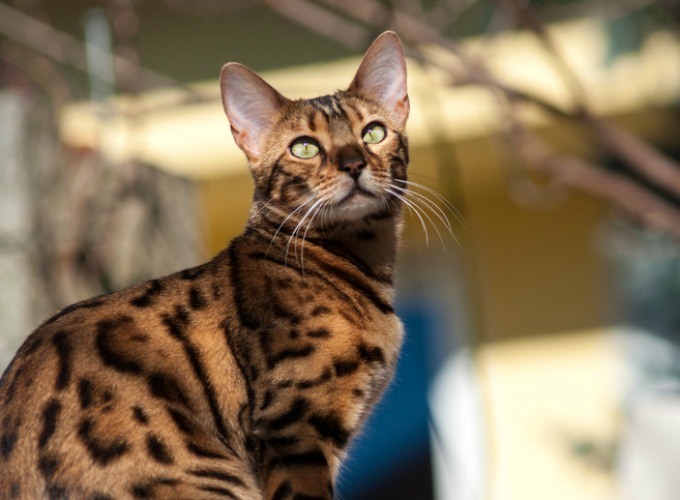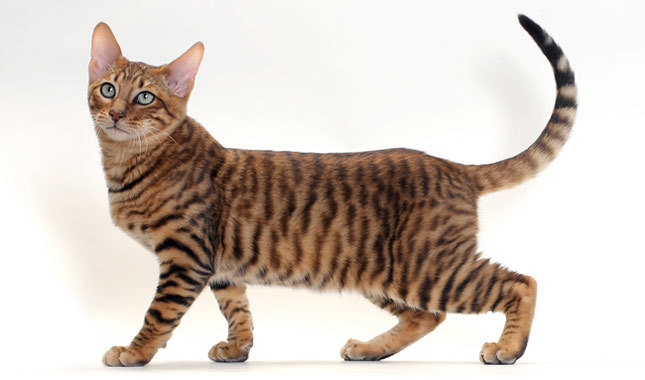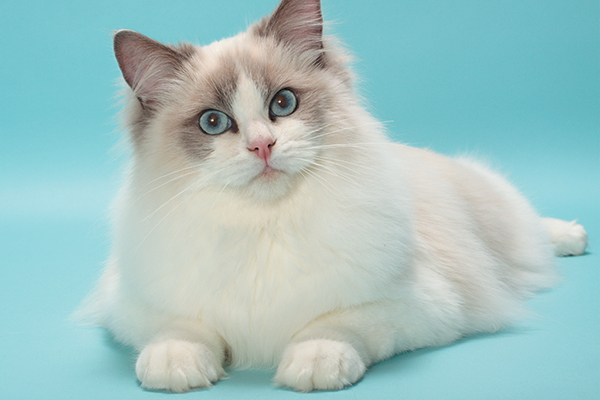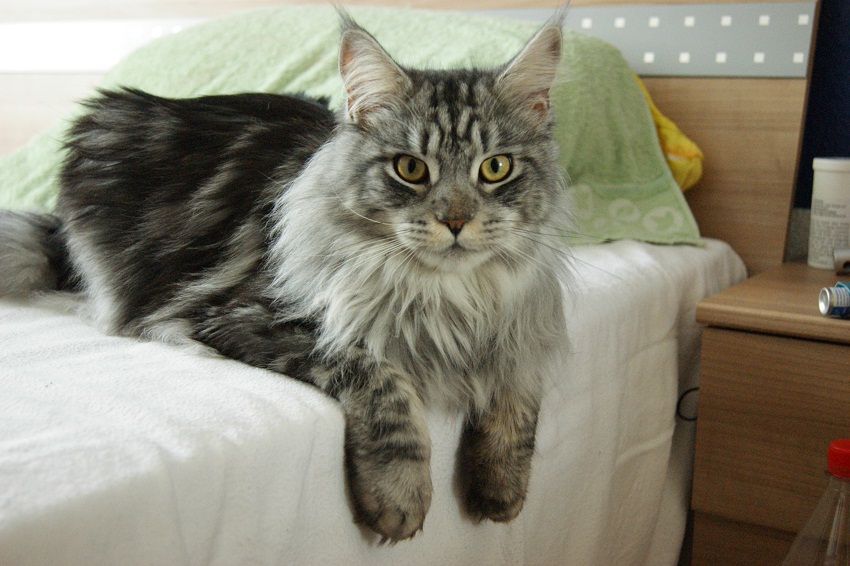The Lykoi, as a new emerging cat breed, was created due to a natural genetic variation in the population of the Domestic Shorthair. It is still being developed by breeders who previously had worked with some hairless cats. It has a somewhat wolf-like appearance, characterized by sparse hair surrounding its nose, ears, eyes, and muzzle, while the rest of its body features a patched coat. These physical characteristics together with large round eyes and a wedge-shaped head lend the cat a lean and shabby look.
Quick Information
Physical Appearance & Size
| Weight: | 2-3.2 kg |
Colors & Patterns
| Coat: | Short to medium length with fine or coarse hair distributed thinly over the body |
| Color: | Solid black or a combination of black and white |
Other Characteristics
| Other Names: | Wolf Cat, Werewolf Cat |
| Group of Breed: | Domestic |
| Lifespan (Life Expectancy): | Unknown |
| Personality Traits: | Affectionate, lovable |
| Shedding: | Moderate |
| Good with children: | Yes |
| Vocalization (Noise): | Not talkative but purrs loudly |
| Hypoallergenic: | No |
| Country of Origin: | United States of America |
| Competitive Registration/Qualification Information: | TICA |
History
Back in 2011, two distinct litters of kittens were given to Patti Thomas, Dr. Johnny Gobble, and his wife Brittney Gobble, leading to the discovery of this breed. Several health evaluations were done by these Tennessee-based breeders to make sure that the appearance of the cats was not due to any disease or sickness. Two of the distinct cats were mated intentionally to create the first Lykoi offspring.
In 2012, the breed went before the TICA registry and received the “Registration Only” status. Currently, it has been recognized by TICA as a “Preliminary New Breed”. The breeding program has now been expanded to achieve the “Advanced New Breed” recognition.
Temperament and Behavior
As an intelligent cat, the lykoi can overcome most of the problems that it faces. Although this cat loves to be in company with humans, it does not get bored if left alone with toys or other objects in a room. Apart from humans, it also gets along well with other cats of its breed. Being protective of its toys and family, it shows an initial reluctance in sharing them with new pets. However, it mingles with them once it finds out they are not at all threatening. It not only has a werewolfish appearance but also a strong preying instinct like a hound dog.
Care
In general, a lykoi keeps itself clean by licking its coat, especially during the molting season. Because of its patched coat its skin accumulates excess oils that can be managed by regular bathing. Bathe your pet every week while it is molting, but be sure to slacken the bathing schedule after the hair has grown back.
Check its ears occasionally for the accumulation of dirt. You can wipe the ears tenderly using a cotton ball dipped in a cleaner that is mild for your pet’s skin. Nail clipping, as well as dental cleaning, every week will keep your cat’s nail and teeth problems away.
The lykoi cats are generally healthy, but few illnesses common in hairless breeds may occasionally show up. They may have some skin problems such as sunburn, buildup of skin oil, and difficulty in keeping warm. Since they are a new breed, not much is known about their chronic health concerns.
Consult an experienced vet and get your pet immunized against some of the deadly feline illnesses including panleukopenia, parvovirus, and upper respiratory infections.
As these cats are lively and energetic by nature, they need plenty of activities to keep themselves satiated, both mentally and physically. Allow them to take part in interactive playing sessions involving games of chase. You can keep them busy with toy puzzles and other games of challenge. The lykois love to keep an eye on their dwelling place from a high spot; therefore they will enjoy climbing a pet furniture like a cat tree.
Training
Because of their smart disposition, they can be easily trained, making them suitable for those looking to own easy-to-train cats. Introducing the kittens to strangers as well as other pets is advisable for making them sociable. Training them with bell balls, catnip mice, and whirly feathers will satisfy their natural fetching and hunting instincts.
Feeding
Provide your feline pet with a nutritious diet that will give them the proper balance of proteins, carbohydrates, fats, and minerals. Ensure that the cat gets adequate amounts of commercial cat food as well as fresh drinking water regularly. Like most other breeds, raw meat should be given to these carnivores.
Interesting Facts
- The first lykoi cat that was bred intentionally in 2011 was named Daciana Dream.
- The lykoi’s pink skin is extremely sensitive to sunlight, so much so that, even a few hours of exposure can change it into black within a few days.

